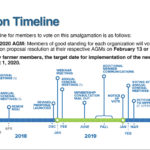
Tag Archives Business/Finance

More markets, more vendors, more challenges
Increasing visitor traffic to farmers’ markets would help, says Jeff Veenstra, Wild Earth Farms owner

No end in sight for supply management working groups
The slow pace of progress is due to the complexity of the issues at hand, say industry insiders

The farmers’ market goes high tech
A small group of local food producers are taking their marketing efforts online

A weaker Canadian dollar lifts ICE canola futures
Healthy crush margins should keep processors rolling steady

Grocery store entry easier than ever
Even those with limited product volumes should explore these opportunities, business development specialist tells St. Jean Farm Days

Export uncertainties keep canola trading rangebound
New estimates call for a one per cent rise in canola acres

Farm income: a dip and now holding
Canadian farm income fell on market volatility, but export growth is still likely, says FCC

Comment: The unavoidable death of ‘click and collect’
Consumers want to get food products delivered directly to their homes but they don’t necessarily want to pay for it

Revised commodity group merger proposal responds to farmer concerns
Crop committees and delegates will help with the workload and encourage engagement with members
Merger will create a substantial new organization
The new group would represent 8,000 Manitoba farmers and 40 per cent of annual crop acres


